Ancient High-Technology: Automatons In Greek Mythology
A. Sutherland - AncientPages.com - It cannot be denied that the concept of automation was known to the ancient Greeks. There is a good reason to believe that these ancient people had the skills to design self-operating machines but today we know about them only from mythical stories related to Hephaestus and a few others.
The world's first metallurgist and a master engineer, according to Greek mythology, was the blacksmith of the Olympian Gods, Hephaestus (or Vulcan, his Roman counterpart).
In Greek mythology, we come across detailed descriptions of devices created by Hephaestus and Talos was not the only creation of the master. Hephaestus produced golden walking statues which resembled young living women to serve him. They had their own voices, strength and helped him to walk.
The divine smith also created the Celedones (automotones or automata) - animate, golden statues that could sing. They became known as the magical singers standing at the Temple of the God Apollo at Delphi.
The automatons had the shape of either beautiful women, wryneck birds, or a combination of the two--sirens-like bird-women. Other interesting inventions of Hephaestus were the four bronze horse-shaped automotones that were used to draw the chariot of his two sons, the Kabeiroi.
Hephaistos made these machines by breathing defiant fire between their teeth, like the pair of brazen footed bulls which he made for Aietes the redoubtable ruler of the Kolkhians, with hot collars and burning pole. Eurymedon [one of the Kabeiroi] drove and guided the fiery mouths of the iron foot steeds with a fiery bridle" wrote Nonnus, a Greek poet in an epic tale of the god Dionysus.'
In Iliad, Homer writes about the Golden Tripods of Olympus: "[Hephaistos] was sweating as he turned here and there to his bellows busily, since he was working on twenty tripods which were to stand against the wall of his strong-founded dwelling. And he had set golden wheels underneath the base of each one so that of their own motion they could wheel into the immortal gathering, and return to his house: a wonder to look at. These were so far finished, but the elaborate ear handles were not yet on. He was forging these, and beating the chains out."
From Greek mythology, we also learn about a mechanical device known as the Kaukasian Eagle that was set by Zeus to feed on the ever-regenerating liver of the Titan Prometheus, after he was chained to the peak of Mount Kaukasos as punishment for stealing fire from the gods.
The eagle was described as a bronze automaton also constructed by Hephaestus.
The Olympian Gods used a set of twenty-wheeled tripods crafted by Hephaistos out of gold. They were automatic and wheeled themselves in and out of the halls of the gods as they were required.
In his epic poem Argonautica, Apollonius Rhodius says that when Hephaestus decided to give Aeetes, King of Kolkhis a present, he constructed a pair of fire-breathing bull-shaped automatons forged out bronze.
"He [Hephaistos] had also made him [Aeetes king of Kolkhis] Bulls with feet of bronze and bronze mouths from which the breath came out in flame, blazing and terrible. And he had forged a plow of indurated steel, all in one piece."
All as a thank-offering to Helios, who had taken him up in his chariot when he sank exhausted on the battlefield of Phlegra..."
Icarus' father, Daedalus was a skilled craftsman and he was also familiar with the ancient secrets of robotics. It is said he could create images that "moved about". Were these images in fact one of the first attempts to create an early form of television?
According to Plato, the Greek philosopher, Daedalus constructed human-like figures which moved on their own! Plato states that these robots were so active that they had to be prevented from running away.
From Garcilaso de la Vega (1501-1536), a Spanish soldier we learn that the Incas had a special statue in the Valley of Rimac "which spoke and gave answers to questions like the oracle of the Delphic Apollo."
Was Garcilaso de la Vega describing a computer?
The best way to prove the existence of ancient robots and computers is of course to present physical evidence rather than rely on myths, legends, and ancient scripts. We must not forget it is estimated that our planet has suffered at least five major catastrophes which caused the extinction of more than 50% of all species. Civilizations that existed prior to our own perished in violent cataclysms. If there are any surviving physical objects, then they are most likely buried deep in the oceans. How can we find them when most of our oceans are still unexplored?
Former civilizations possessed many scientific notions that we have today, including the concept of robotics and computer technology.
Written by – A. Sutherland - AncientPages.com Senior Staff Writer
Copyright © AncientPages.com All rights reserved. This material may not be published, broadcast, rewritten or redistributed in whole or part without the express written permission of AncientPages.com
Expand for referencesReferences:
More From Ancient Pages
-
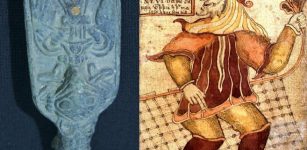 Rare Discovery Of Ancient Artifact Depicting Norse God Loki In Denmark Remains A Mystery
Archaeology | Jan 4, 2017
Rare Discovery Of Ancient Artifact Depicting Norse God Loki In Denmark Remains A Mystery
Archaeology | Jan 4, 2017 -
 European Bronze Age Treasure Of Villenna Has Artifacts Made Of Meteoric Iron
Archaeology | Feb 12, 2024
European Bronze Age Treasure Of Villenna Has Artifacts Made Of Meteoric Iron
Archaeology | Feb 12, 2024 -
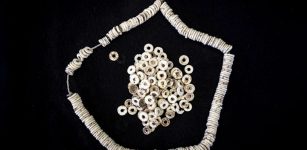 Ostrich Eggshell Beads Reveal 50,000-Year-Old Social Network Across Africa
Archaeology | Dec 21, 2021
Ostrich Eggshell Beads Reveal 50,000-Year-Old Social Network Across Africa
Archaeology | Dec 21, 2021 -
 Entrance To An Unexplored Ice Age Cave Discovered Near Engen!
Archaeology | Aug 4, 2023
Entrance To An Unexplored Ice Age Cave Discovered Near Engen!
Archaeology | Aug 4, 2023 -
 Ground-Breaking Discovery: A 3,300-Year-Old Deep-Sea Canaanite Shipwreck Found
Underwater Discoveries | Jul 3, 2024
Ground-Breaking Discovery: A 3,300-Year-Old Deep-Sea Canaanite Shipwreck Found
Underwater Discoveries | Jul 3, 2024 -
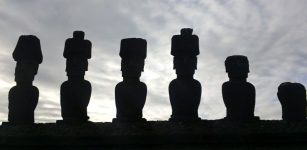 How Did The Early Rapa Nui People Put Huge Hats On Giant Statues Of Easter Island?
Ancient Technology | Jun 5, 2018
How Did The Early Rapa Nui People Put Huge Hats On Giant Statues Of Easter Island?
Ancient Technology | Jun 5, 2018 -
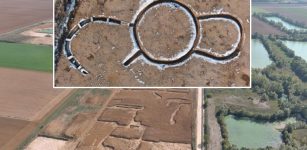 Mysterious Circular Neolithic Structure Used For Unknown Purpose Found In Marliens, France
Archaeology | Apr 16, 2024
Mysterious Circular Neolithic Structure Used For Unknown Purpose Found In Marliens, France
Archaeology | Apr 16, 2024 -
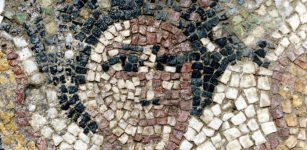 Floors In Ancient Greek Luxury Villa Were Laid With Recycled Glass
Archaeology | Jul 25, 2022
Floors In Ancient Greek Luxury Villa Were Laid With Recycled Glass
Archaeology | Jul 25, 2022 -
 Solar Eclipses And New Attempt To Date Homer’s Iliad And Odyssey
Myths & Legends | Jan 7, 2016
Solar Eclipses And New Attempt To Date Homer’s Iliad And Odyssey
Myths & Legends | Jan 7, 2016 -
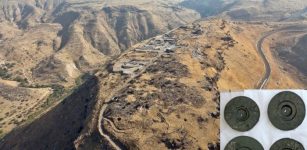 Ancient City Of Hippos-Sussita And The Mysterious Disc-Shaped Copper Plates
Archaeology | Apr 18, 2017
Ancient City Of Hippos-Sussita And The Mysterious Disc-Shaped Copper Plates
Archaeology | Apr 18, 2017 -
 Mysterious Location Of The Amazing Land Of Punt – Can This Puzzle Be Solved One Day?
Featured Stories | Jul 18, 2016
Mysterious Location Of The Amazing Land Of Punt – Can This Puzzle Be Solved One Day?
Featured Stories | Jul 18, 2016 -
 Baffling North American Ancient Skulls Contradict Historical Timelines And Mainstream Theories
Ancient Mysteries | Jun 11, 2020
Baffling North American Ancient Skulls Contradict Historical Timelines And Mainstream Theories
Ancient Mysteries | Jun 11, 2020 -
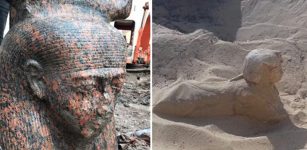 Rare Statue With A Ka Symbol And A Dwarf Sphinx Discovered In Egypt
Archaeology | Dec 18, 2019
Rare Statue With A Ka Symbol And A Dwarf Sphinx Discovered In Egypt
Archaeology | Dec 18, 2019 -
 Amazing Time Capsule – La Roche-Cotard Cave Sealed For 50,000-Years Offers Evidence Neanderthals Were The World’s First Artists
Archaeology | Nov 22, 2023
Amazing Time Capsule – La Roche-Cotard Cave Sealed For 50,000-Years Offers Evidence Neanderthals Were The World’s First Artists
Archaeology | Nov 22, 2023 -
 Denisovans Or Homo Sapiens: Who Were The First To Settle Permanently On The Tibetan Plateau?
Archaeology | Dec 9, 2021
Denisovans Or Homo Sapiens: Who Were The First To Settle Permanently On The Tibetan Plateau?
Archaeology | Dec 9, 2021 -
 Unique 2,700-Year-Old Seal That Belonged To ‘Governor Of The City’ Of Jerusalem Discovered
Archaeology | Jan 2, 2018
Unique 2,700-Year-Old Seal That Belonged To ‘Governor Of The City’ Of Jerusalem Discovered
Archaeology | Jan 2, 2018 -
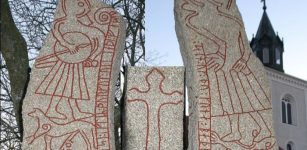 Ledberg Stone (Ledbergsstenen) With Magic Formula Dated To Viking-Era – One Of Most Beautiful Landmarks
Featured Stories | Jan 5, 2023
Ledberg Stone (Ledbergsstenen) With Magic Formula Dated To Viking-Era – One Of Most Beautiful Landmarks
Featured Stories | Jan 5, 2023 -
 Homo Sapiens Survived In The Kalahari Desert More Than 20,000 Years Ago – Stone Age Discovery Shows
Archaeology | Aug 17, 2022
Homo Sapiens Survived In The Kalahari Desert More Than 20,000 Years Ago – Stone Age Discovery Shows
Archaeology | Aug 17, 2022 -
 Secrets Of Namibia’s Fairy Circles Solved – Self-Organizing Plants Are The Creators – New Theory
Archaeology | Oct 21, 2022
Secrets Of Namibia’s Fairy Circles Solved – Self-Organizing Plants Are The Creators – New Theory
Archaeology | Oct 21, 2022 -
 When Giants Ruled North America – Encounters With Mysterious Races Of Giants – Part 1
Ancient Mysteries | Nov 20, 2018
When Giants Ruled North America – Encounters With Mysterious Races Of Giants – Part 1
Ancient Mysteries | Nov 20, 2018


